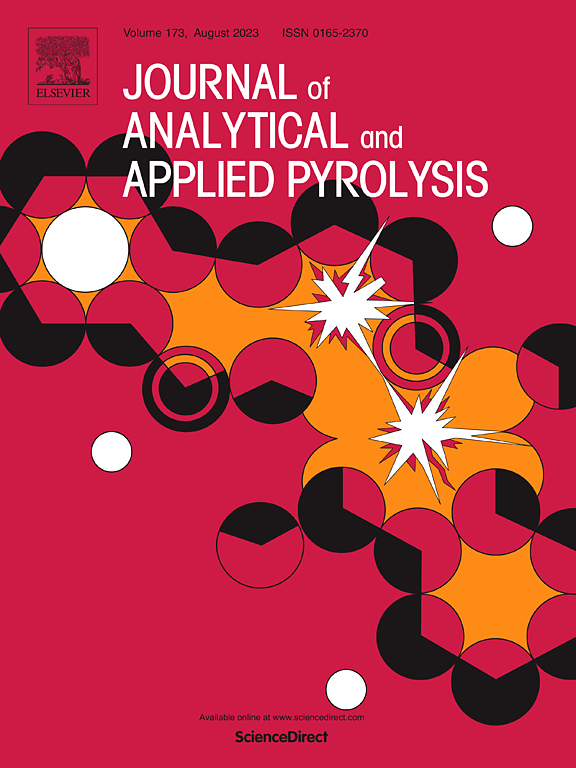Chemical recycling of PC/ABS-blends by pyrolysis
IF 5.8
2区 化学
Q1 CHEMISTRY, ANALYTICAL
引用次数: 0
Abstract
Not all plastics can be recycled mechanically. Polycarbonate (PC) combined with acrylonitrile butadiene styrene (ABS) is one such material used in applications like electronic casings and automotive components. Since mechanical recycling of PC/ABS results in thermal degradation and the loss of required properties, alternative methods are sought. Pyrolysis, the thermal decomposition without oxygen, preferentially cleaves certain bonds, yielding valuable monomers. This study investigates the pyrolysis of non-flame-retarded and flame-retarded PC/ABS blends at laboratory and pilot plant scales. Analyses utilized thermogravimetry and infrared spectroscopy (TG-IR). The blends exhibited two decomposition stages influenced by flame retardants. The IR spectra provided insights into the structural properties of volatile compounds. CO2 yield ranged from 6 % to 8 %, with the flame-retarded blend showing 0.5–1 % higher yields. Subsequently, we conducted experiments in a fixed-bed reactor, varying the pyrolysis temperature, heating rate, and blend composition. Masses of gaseous, liquid, and solid products were measured, with a liquid yield optimum at 480–500∘C. All product fractions were analyzed. Liquid products contained valuable compounds like phenol, styrene, and bisphenol-A, analyzed using gas chromatography (GC) and comprehensive two-dimensional gas chromatography-mass spectrometry (GC×GC-MS). For the non-flame-retardant blend, bisphenol-A was the main product (25–30 %), while phenol dominated (10–15 %) in the flame-retardant blend.
求助全文
约1分钟内获得全文
求助全文
来源期刊
CiteScore
9.10
自引率
11.70%
发文量
340
审稿时长
44 days
期刊介绍:
The Journal of Analytical and Applied Pyrolysis (JAAP) is devoted to the publication of papers dealing with innovative applications of pyrolysis processes, the characterization of products related to pyrolysis reactions, and investigations of reaction mechanism. To be considered by JAAP, a manuscript should present significant progress in these topics. The novelty must be satisfactorily argued in the cover letter. A manuscript with a cover letter to the editor not addressing the novelty is likely to be rejected without review.

 求助内容:
求助内容: 应助结果提醒方式:
应助结果提醒方式:


